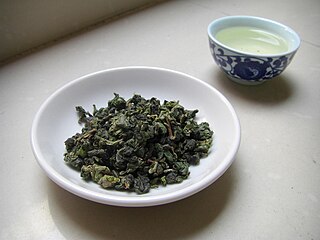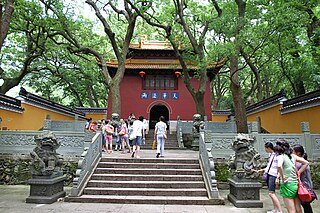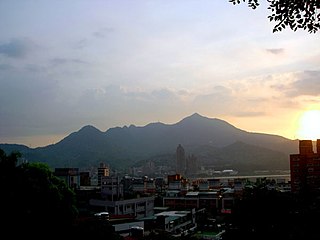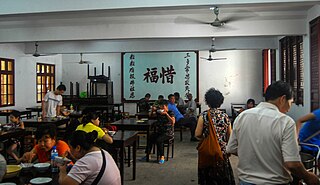
Guanyin or Guan Yin is the most commonly used Chinese translation of the bodhisattva known as Avalokiteśvara. In English usage, Guanyin is the Buddhist bodhisattva associated with compassion and venerated chiefly by followers of Mahayana Buddhist schools as practiced in the sinosphere. From the Buddhist perspective, the term Guanyin encompasses the entire spectrum of Mahayana Buddhist practices related to Avalokitesvara ranging from the Lotus Sutra and extending towards Shingon as well as Tibetan Vajrayana. It also includes localized practices different from other regions; localizations are however found throughout the Buddhist world. Guanyin also refers to the bodhisattva as adopted by other Eastern religions such as Taoism, where she is revered as an immortal, as well as Chinese folk religions, Japanese Shinto, Korean blending of Guanyin worship with native beliefs and in Vietnam the adoption of Guanyin by Cao Daism. In western languages, she was first given the appellation of "Goddess of Mercy" or the Mercy Goddess by Jesuit missionaries in China. The Chinese name Guanyin, is short for Guanshiyin, which means "[The One Who] Perceives the Sounds of the World".

Puji Temple is a Buddhist temple located on the island of Putuoshan in Zhoushan, Zhejiang, China.

Guanyin District is a rural, coastal district in western Taoyuan City, Taiwan. Guanyin is the name of a Buddhist goddess.

Tieguanyin is a premium variety of Chinese oolong tea that originated in the 19th century in Anxi in Fujian province. Tieguanyin produced in different areas of Anxi have different gastronomic characteristics.

Sudhanakumâra, mainly known as Sudhana and Shancai or Shancai Tongzi in Chinese, and translated as Child of Wealth, is the protagonist in the last and longest chapter of the Avatamsaka Sutra. Sudhana appears in Buddhist, Taoist and folk stories; in most of them he is one of the acolytes of the bodhisattva Avalokitesvara (Guanyin) and is paired with Longnü. He and Longnü being depicted with Guanyin was most likely influenced by the Jade Maiden and Golden Youth who both appear in the iconography of the Jade Emperor. A fictionalised account of Sudhana is detailed in the classical novel Journey to the West, where Sudhana is portrayed as a villain, Red Boy, who is eventually subdued by Guanyin and becomes the bodhisattva's attendant.

The Guanyin of Nanshan is a 108-metre (354 ft) statue of the bodhisattva Guanyin, sited on the south coast of China's island province Hainan near the Nanshan Temple of Sanya. The statue has three aspects: one side faces inland and the other two face the South China Sea, to represent blessing and protection by Guanyin of China and the whole world. One aspect depicts Guanyin cradling a sutra in the left hand and gesturing the Vitarka Mudra with the right; the second with her palms crossed, holding a string of prayer beads; and the third holding a lotus. As of August 2018, this is the twelfth tallest statue in the world and the tallest statue of Guanyin in the world.

Fayu Temple, also called Stone Temple, is one of three major temples in Mount Putuo, Zhejiang, China. Its grand hall was rebuilt in 1699 during the Qing dynasty (1644–1911).

The Mount Guanyin is a mountain in Wugu District, New Taipei City, Taiwan.

Mesosini is a tribe of longhorn beetles of the Lamiinae subfamily.
Pachyosa is a genus of longhorn beetles of the subfamily Lamiinae, containing the following species:

The Hall of Guanyin or Guanyin Hall is the most important annex halls in Chinese Buddhist temples and mainly for enshrining Guanyin (Avalokiteśvara). Guanyin, also called "Guanshiyin" (觀世音), "Guanshizizai" (觀世自在), "Guanzizai" (觀自在), etc., is the attendant of Amitabha and one of the "Western Three Saints" (西方三聖). Guanyin is renowned for his mercy and sympathy. According to Chapter of the Universal Gate of Avalokiteśvara Bodhisattva (《觀世音菩薩普門品》), if people are in danger, they just need to call his name and he will hear them and go to save them. Since he has many manifestations, different places enshrine different statues of Saint Guanyin (圣觀音), Guanzizai (觀自在), and Thousand-armed and eyed Guanyin (千手千眼觀音菩薩).
Pachyosa atronotata is a species of beetle in the family Cerambycidae. It was described by Kusama and Irie in 1976. It is known from Japan.
Pachyosa cervinopicta is a species of beetle in the family Cerambycidae. It was described by Léon Fairmaire in 1897. It is known from Japan.
Pachyosa hirtiventris is a species of beetle in the family Cerambycidae. It was described by Gressitt in 1937, originally under the genus Coptops. It is known from Japan.
Pachyosa itoi is a species of beetle in the family Cerambycidae. It was described by Ohbayashi in 1985. It is known from Japan.
Pachyosa kojimai is a species of beetle in the family Cerambycidae. It was described by Masao Hayashi in 1974. It is known from Taiwan and Japan.

Guanyin Ancient Temple is a Buddhist temple located in Chuanying District of Jilin City, Jilin, China.

Huiji Temple is a Buddhist temple located on Mount Putuo, in Zhoushan, Zhejiang, China. Huiji Temple is commonly called the temple on the Buddha Summit and it is the third largest Buddhist temple on Mount Putuo, after Puji Temple and Fayu Temple.

Qixian Temple, also known as Guanyin Cave, is a Buddhist temple located on Mount Wutai of Taihuai Town, in Wutai County, Shanxi, China.
Guanyindong or Guanyin Cave is a Palaeolithic cave site, discovered in 1964 in Qianxi County, Guizhou, China.














